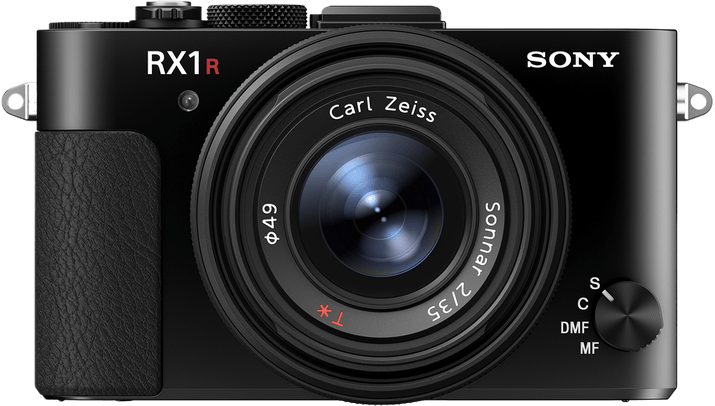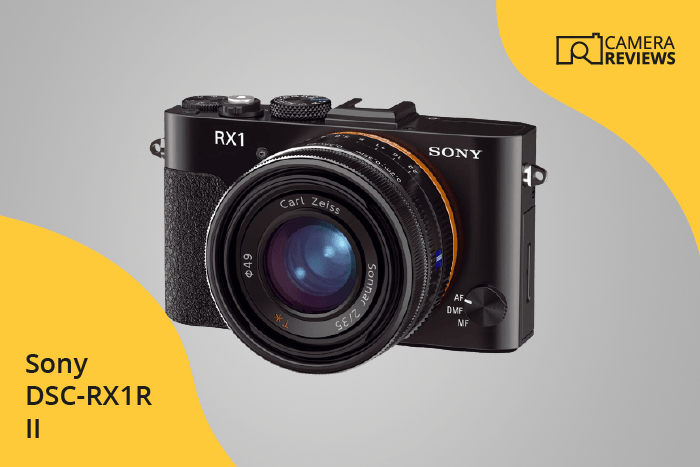Sony Cyber-shot DSC-RX1R II Specs and Scores

The Sony Cyber-shot DSC-RX1R II receives a score of 62/100. Announced on October 14, 2015, this compact camera measures 113 x 65 x 72mm and weighs 507g or 1.12lbs. With a launch price of $3300, it was a premium option in the market back in 2015. Although its specifications might not be cutting-edge today, the DSC-RX1R II still holds its ground as a reliable camera for photography enthusiasts.
Sony Cyber-shot DSC-RX1R II Overview and Optics
The optics of the Sony Cyber-shot DSC-RX1R II receive a score of 75 out of 100. This camera boasts a 42.4-megapixel CMOS sensor, which is full-frame and has a DXOMARK score of 97. The shooting speed is 5 frames per second, and it uses a Bionz X processor. However, it does not have image stabilization, and the aspect ratio is 3:2.
In the current market, the high-resolution sensor and full-frame size are impressive features, contributing to the camera’s overall performance. The fixed lens mount limits the versatility of the camera, as users cannot change the lens. The lack of image stabilization may lead to shaky images, especially in low-light conditions or during fast-paced shooting.
Despite these limitations, the Sony Cyber-shot DSC-RX1R II still offers a solid performance in terms of optics and image quality, making it a strong contender in the market.
Sony Cyber-shot DSC-RX1R II Video Performance
The Sony Cyber-shot DSC-RX1R II receives a video score of 56/100. The camera offers Full HD video resolution, with maximum dimensions of 1920 x 1080. The maximum video frame rate is 60fps, providing smooth footage. However, this camera does not include time-lapse functionality.
When considering today’s market, the DSC-RX1R II’s video capabilities are not the most advanced. Many cameras now offer 4K video resolution, which surpasses the Full HD offered by this model. The lack of time-lapse functionality may also be a drawback for some users.
Despite its modest video score, the Sony Cyber-shot DSC-RX1R II still delivers quality Full HD video. However, those seeking cutting-edge video features may need to explore other options.
Sony Cyber-shot DSC-RX1R II Features and Benefits
The Sony Cyber-shot DSC-RX1R II has a feature score of 44 out of 100. The camera is equipped with a 3-inch screen, offering a resolution of 1,228,800 dots. However, it does not have a touchscreen, which is a drawback compared to other cameras in today’s market.
This camera has a flip screen, which is a useful feature for shooting at different angles. The lack of GPS can be a downside for those who want to geotag their photos, but it does come with WIFI for easy sharing and transferring of images. Unfortunately, it does not have Bluetooth capabilities.
Taking all the specifications into account, the Sony Cyber-shot DSC-RX1R II has some useful features but falls behind in certain aspects compared to its competitors.
Sony Cyber-shot DSC-RX1R II Storage and Battery
The Sony Cyber-shot DSC-RX1R II receives a storage and battery score of 13/100. This camera has one memory card slot, accepting SD, SDHC, SDXC, and Memory Stick Pro Duo cards. In today’s market, multiple memory card slots are preferred for increased storage and backup options. The DSC-RX1R II’s battery life is 220 shots, with an NP-BX1 battery type. This battery life is relatively low compared to other cameras in its class. Additionally, the camera lacks USB charging capabilities, which limits charging options. The storage and battery specifications of the DSC-RX1R II are underwhelming, making this aspect of the camera less competitive in the current market.
Sony Cyber-shot DSC-RX1R II Alternatives
Do you want to know how the Sony Cyber-shot DSC-RX1R II compares to its competitors? Have a look at the most popular comparisons for this camera below:
- Sony a5100 vs Cyber-shot DSC-RX1R II
- Sony Cyber-shot DSC HX400V vs Cyber-shot DSC-RX1R II
- Sony a7 III vs Cyber-shot DSC-RX1R II
- Canon EOS Rebel T6s / 760D vs Sony Cyber-shot DSC-RX1R II
- Sony Alpha 200 vs Cyber-shot DSC-RX1R II
- Canon EOS Rebel XTi / 400D vs Sony Cyber-shot DSC-RX1R II
Sony Cyber-shot DSC-RX1R II FAQ
Does the Sony Cyber-shot DSC-RX1R II Have Built-in Image Stabilization?
Unfortunately, the Sony Cyber-shot DSC-RX1R II does not have built-in image stabilization, which means it may not perform optimally in low-light conditions or when capturing fast-moving subjects.
Does the Sony Cyber-shot DSC-RX1R II Support 4K Video Recording?
The Sony Cyber-shot DSC-RX1R II does not support 4K video recording. Its maximum video resolution is Full HD (1920×1080), which is still suitable for most everyday recording needs.
What Size Sensor Does The Sony Cyber-shot DSC-RX1R II Have?
The Sony Cyber-shot DSC-RX1R II is equipped with a full-frame sensor, which provides excellent image quality and low-light performance compared to smaller sensor cameras.
Does the Sony Cyber-shot DSC-RX1R II Have a Dual Memory Card Slot?
No, the Sony Cyber-shot DSC-RX1R II only has a single memory card slot, which may limit storage capacity and backup options for professional photographers.
Does the Sony Cyber-shot DSC-RX1R II Have a Touch Screen?
The Sony Cyber-shot DSC-RX1R II does not feature a touch screen, so users will need to navigate menus and settings using physical buttons and dials on the camera.
Does the Sony Cyber-shot DSC-RX1R II Have Wi-Fi and Bluetooth?
The Sony Cyber-shot DSC-RX1R II has Wi-Fi capabilities for wireless image transfer and remote control, but it does not have built-in Bluetooth connectivity.
Does the Sony Cyber-shot DSC-RX1R II Have GPS?
No, the Sony Cyber-shot DSC-RX1R II does not have built-in GPS functionality, which means it cannot automatically geotag your photos with location information.
Is the Sony Cyber-shot DSC-RX1R II Weather Sealed?
The Sony Cyber-shot DSC-RX1R II is not weather-sealed, so it may not be the best choice for outdoor photographers who need protection from dust, moisture, and other environmental factors.
Does the Sony Cyber-shot DSC-RX1R II Have a Built-in Flash?
No, the Sony Cyber-shot DSC-RX1R II does not have a built-in flash, so you may need to use an external flash or other lighting sources for low-light photography.

